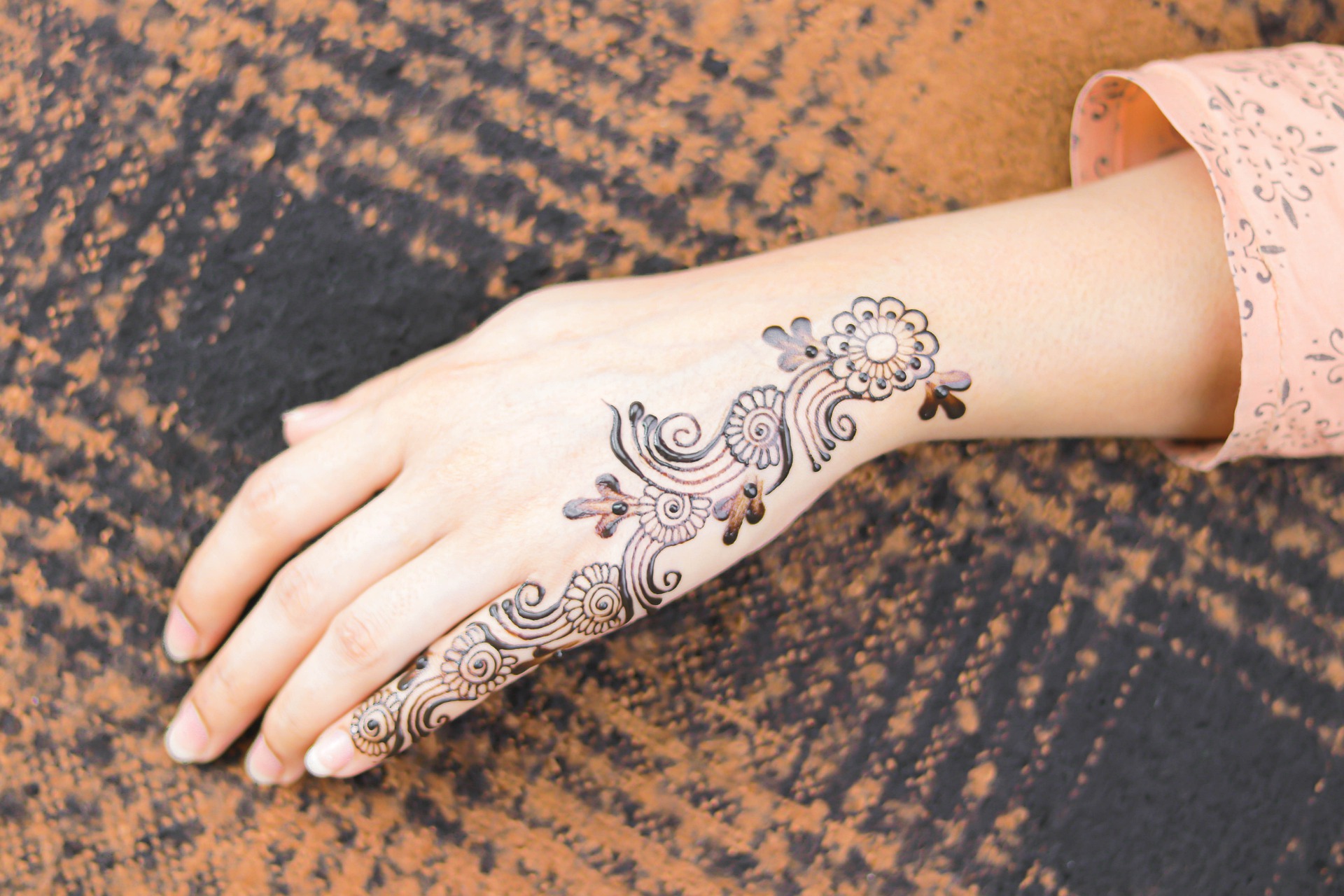Unlike dyes and hair dyes, henna is completely safe to use and can be used as many times as needed. Depending on your current hair color, henna results may vary.
Henna can be used on dyed hair, and the hair will acquire the henna’s color. This is because most hair dyes seep into the individual hairs themselves and color it that way. However, henna dyes coat the hair, and this allows them to over the dye because they do not penetrate the strands.
Even if your hair doesn’t absorb different colors as easily after using henna, you can still even out the color with other dyes. You can dye your hair with synthetic dyes if you use all-natural henna without chemicals, additives, or preservatives.
As long as you use quality body henna, it is safe to dye chemically treated hair. You cannot get rid of henna with regular chemical hair dye, only with another henna product. Some brands of henna dyes contain metal salts, so chemical hair dyes cannot be used on them. As stated above, 100% natural henna only dyes your hair reddish orange, and any brand that claims to dye it other colors uses different henna ingredients.
Natural Henna Is a Great Alternative to Synthetic Hair Dyes
If you want to dye your hair naturally without being harmed by harmful chemicals, you should use natural henna. Natural henna powder can be used as a natural hair dye, coloring shampoo and conditioner, hairspray, hair mask, dandruff remedy and more. Henna powder is mixed with henna paste, which can be used to color hair (permanently until it grows back) or to create (temporary) henna designs on the body. Another great thing about using henna is that you can make a paste that suits your hair type.
You can also dye your hair dark brown or black with henna (you can mix it with indigo), color your gray hair, or dye it strawberry blonde. Basically, once you start dyeing with henna, you have options: continue dyeing, let the hair grow out, or cut all dyed hair. If you are not sure what permanent color henna will give you, you can do a trial fixation on a small section of hair or even brushed hair. If you want to skip the mixing process, you can always use ready-made henna dye.
Before applying henna, protect your skin with a thick conditioner or cream to create a protective barrier. You can protect your hairline, the area around your ears, and the back of your head with Ultrabland or an ointment to prevent henna staining of the skin around your hair.
How Henna Differs from Commoner Dyes
The reason you can’t dye henna with a chemical dye is because the henna coats the outside of the hair shaft, affecting the penetration of the chemical dye. It is not henna that breaks the hair, but the chemicals used to dye the hair with henna damage the hair.
To dye hair that has been henna-colored, your hairdresser must use a much stronger and more aggressive chemical to re-open (damage) the cuticle so the dye can seep into the hair. Removing henna with bleach or other chemicals is often a disaster, as the use of peroxide or ammonia pushes the dye even deeper into the hair shaft.
What most stylists don’t realize is that highly toxic chemicals are just as bad for the hair dye they use as henna. The chemical PPD in black henna can cause severe scalp and hair reactions, including burns, blisters, scars, and more, and is banned in the US, but not in hair dyes for some reason. Black henna contains a highly toxic chemical called PPD (paraphenylenediamine), which is also found in most dark hair dyes on the market.
Black henna is not henna at all, but a chemical dye called p-phenylenediamine. It can often cause allergic reactions, and any black henna hair dye that claims to be black henna or contains this ingredient instead of natural henna should be avoided. Henna is generally very safe and well tolerated to use.
Henna Has a Plethora of Other Uses
Henna is so much more than just a warm pigment. By combining henna with other herbal powders such as shikakai and indigo, henna hair dye allows you to achieve all the tones. The chemical dye washes out within a week, and henna can be reapplied as many times as needed without harming your health because it’s a great hair conditioner that softens and adds shine to your hair. Yes, unlike other herbal dyes like indigo, which take time for your hair to harden before it settles, you can use regular hair dye right after your henna treatment.
Yes, it is safe to use 100% natural indigo and indigo henna on chemically treated hair. The simple answer is yes, henna and chemical dyes react with each other and the results can sometimes be disastrous. In fact, it is a mixture that causes all the reactions between henna and chemical processes.
If your problem is that your hair is turning green like a frog, the henna has reacted with chemicals left in your hair the last time you dyed it with chemical dyes, in which case, read on. This will keep the henna on your hair longer and the color will be more normal, otherwise if your hair is dirty, the henna molecules will not form the correct combination with the natural hair oil and the color will fade within a week.
To dye hair with henna, the leaves of the soulless lavsonia or henna plant are harvested and ground into a fine, colorful powder. This powder is then mixed with liquid to create a thick, mud-like paste that provides a deep scrub.




